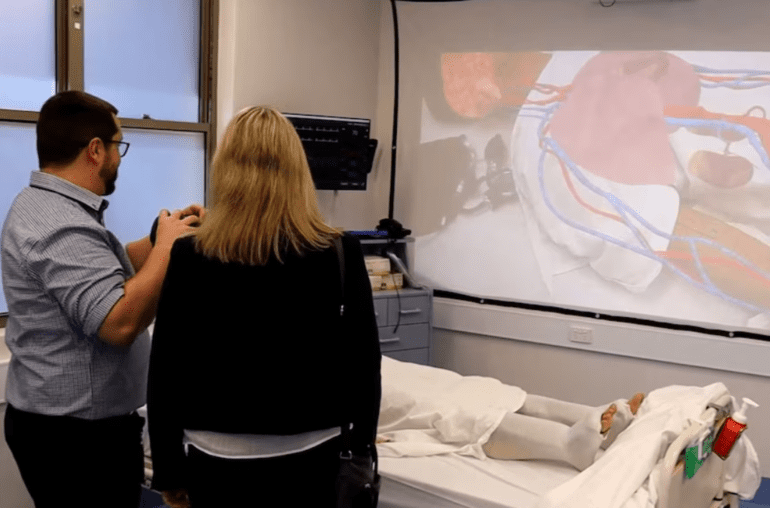TL;DR:
- The Centre for Rural Education, Simulation, and Training (CREST) in Wellington, NSW, has established a $1.3 million facility for medical professionals’ training in rural settings.
- AI-powered mannequins like “Elizabeth” and “Alex” provide nurses with dynamic and realistic simulations for hands-on experience.
- The facility utilizes a 3-D printer to create lifelike body parts, enhancing nurses’ understanding of human anatomy.
- CREST welcomes nurses from different regions and countries to familiarize them with the local healthcare practices and culture.
- The ultimate goal is to retain nurses in rural areas by offering continuous training and career advancement opportunities.
Main AI News:
In the heart of Wellington, New South Wales, a cutting-edge medical simulation center, the Centre for Rural Education, Simulation, and Training (CREST), is reshaping the future of nursing training. With a staggering $1.3 million investment, this state-of-the-art facility introduces a game-changing approach to preparing medical professionals for real-life emergencies, all in the authentic setting of a rural environment.
At the forefront of this groundbreaking endeavor are two remarkable artificial intelligence (AI) training mannequins, “Elizabeth” and “Alex.” These animated patients are more than mere dummies; they are sophisticated AI entities that can convincingly simulate a myriad of unique, life-like scenarios, offering nurses a dynamic and immersive learning experience.
Upon encountering “Elizabeth,” nursing staff, both new and seasoned, are faced with a challenging scenario as she writhes in pain, demanding immediate attention. The intensity of the situation compels the nurses to delve into their skills and expertise, seeking to unravel the underlying medical issue. What makes these simulations truly invaluable is their interactive nature, allowing healthcare professionals to reevaluate and refine their approaches, fostering continuous improvement.
Under the guidance of Senior Nurse Educator, Gabrielle Arnold, the medical staff receives extensive training in the rural facility’s emergency departments, wards, and residential aged care facilities. The environment’s realism and complexity ensure that nurses are well-prepared for the unique challenges often encountered in remote areas.
One remarkable feature of the CREST Simulation Centre is the integration of cutting-edge technology, including a 3-D printer that can produce life-like replicas of crucial body parts such as hearts, lungs, and veins. This remarkable tool facilitates on-site training and remote learning, empowering nurses to deepen their understanding of the human body and its complexities.
Beyond its scope as a training hub for local healthcare professionals, CREST also serves as an international beacon of nursing expertise. By welcoming nurses from various regions and countries, the center facilitates cross-cultural exchanges, bridging the gaps in healthcare practices and cultural differences. Nurse practitioners from abroad are exposed to the intricacies of the Western NSW Local Health District, enabling them to navigate the nuances of the region’s healthcare system confidently.
Gabrielle Arnold emphasizes that the ultimate vision of this innovative program is to address the shortage of healthcare professionals in rural areas. By offering a progressive training pathway, nurses are encouraged to envision a long-term career in regional centers. As they witness the commitment to their growth and development, they are inspired to remain rooted in the community and continue advancing their expertise in patient care.
Conclusion:
The integration of AI-powered patients and advanced technology at the CREST Simulation Centre presents a transformative approach to nursing education. Providing an immersive and realistic training environment equips nurses with the necessary skills and confidence to handle real-life emergencies in rural settings. This innovative training model has the potential to strengthen the healthcare workforce in regional areas and contribute to the overall growth of the medical simulation market. As demand for skilled healthcare professionals continues to rise, investing in cutting-edge simulation facilities could become a competitive advantage for medical training institutions, attracting more students and fulfilling the crucial need for proficient nurses in underserved regions.

